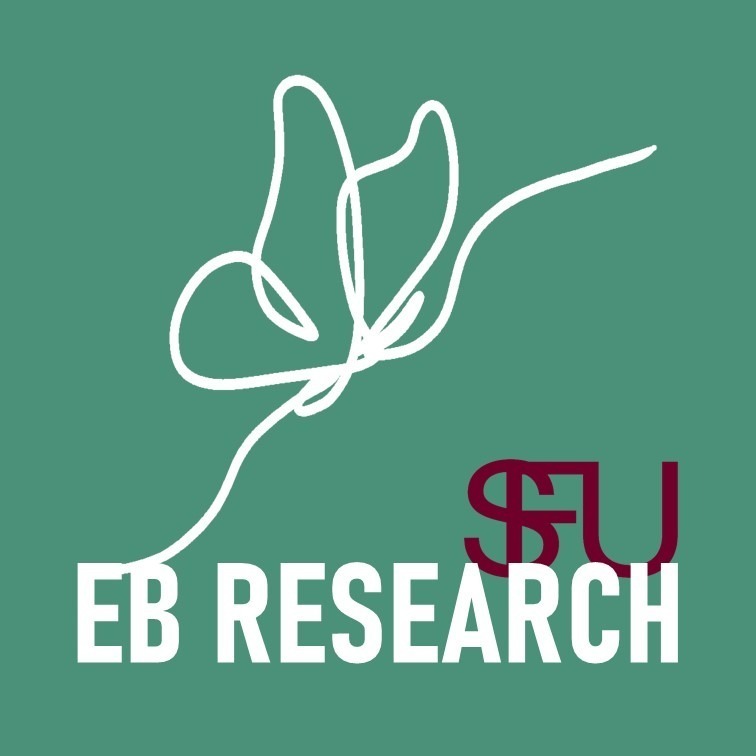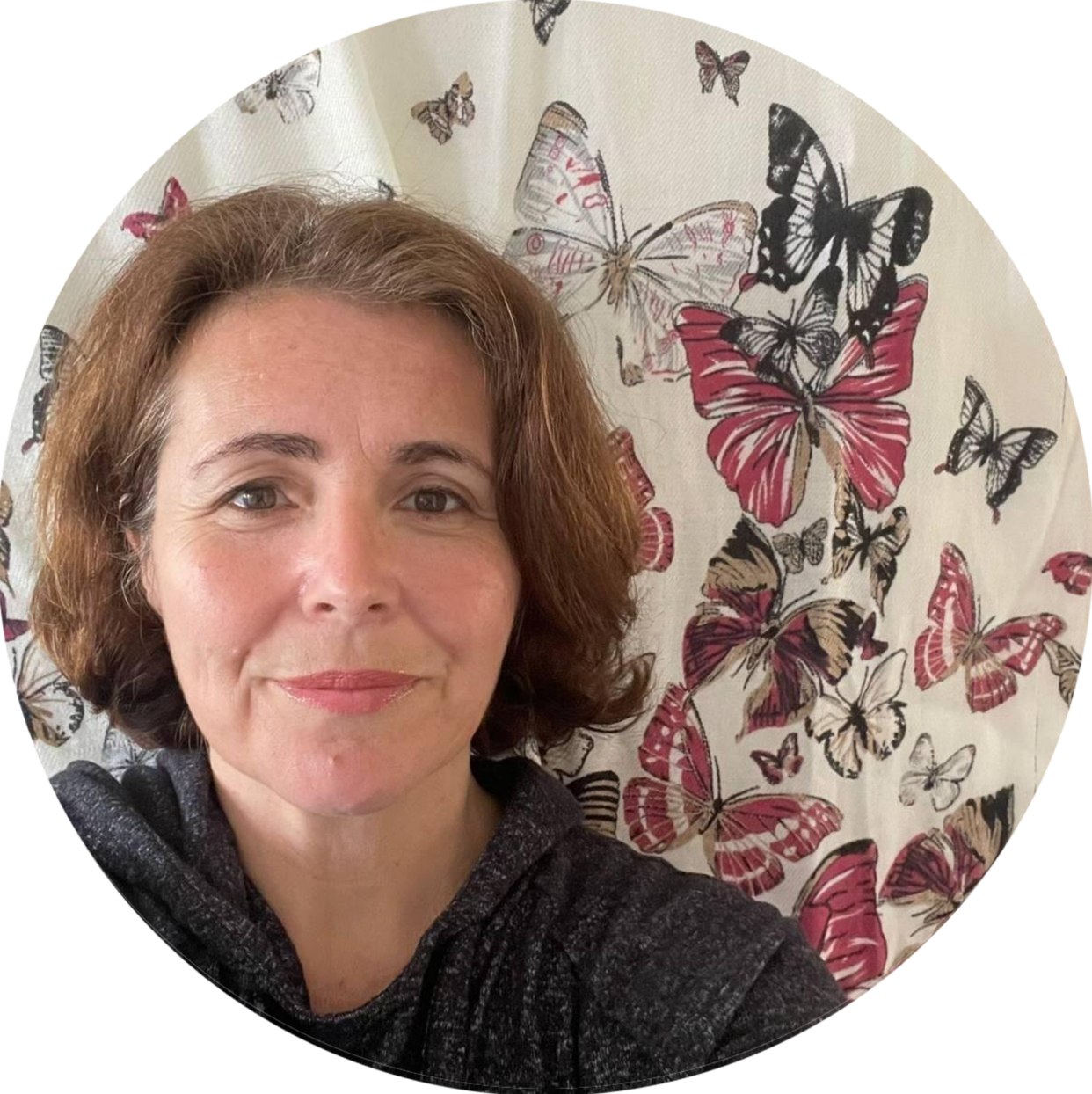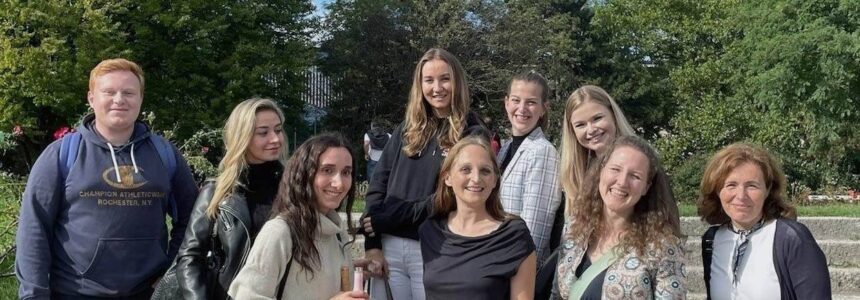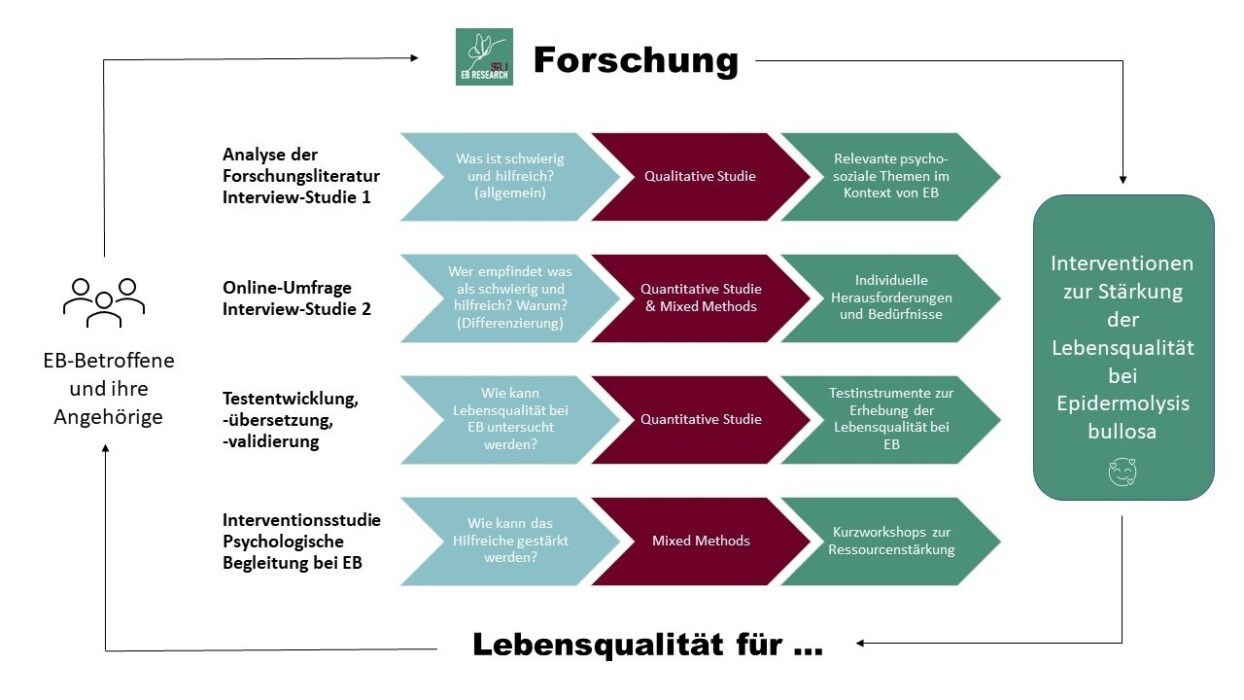 Epidermolysis bullosa (EB) is a rare genetic chronic disease characterised by fragility of the skin that cannot be cured yet. Even minimal friction leads to the formation of blisters and wounds. People with EB are often called “butterfly children” because their skin is as fragile as a butterfly’s wings. EB also has a huge impact on all aspects of psychosocial life. Chronic pain and the need for time consuming wound care, often lasting several hours per day, lead to restrictions in everyday life. These are accompanied by various other social and emotional challenges.
Epidermolysis bullosa (EB) is a rare genetic chronic disease characterised by fragility of the skin that cannot be cured yet. Even minimal friction leads to the formation of blisters and wounds. People with EB are often called “butterfly children” because their skin is as fragile as a butterfly’s wings. EB also has a huge impact on all aspects of psychosocial life. Chronic pain and the need for time consuming wound care, often lasting several hours per day, lead to restrictions in everyday life. These are accompanied by various other social and emotional challenges.
Our research project “Burdens and helpful aspects for achieving and maintaining quality of life in epidermolysis bullosa” is the first major research project focusing particularly on the diverse psychosocial aspects of the disease. The previously primarily medical perspective is being enriched by psychological approaches and methods. While medical and clinical research aims to find a cure for EB in the long term, psychosocial research aims to improve the quality of life of those affected and their families in the now.
As part of this, we aim to answer the following questions:
- What are difficulties and problems faced by those living with EB and their families?
- Who finds what helpful and why?
- How to strengthen what is considered as helpful?
The main aim of the project is to examine burdens and helpful aspects in dealing with EB. A special focus is set on the individual perspective of people living with EB and their relatives.
Stay up-to-date via our Instagram page: @eb.research
Project team
Project lead
 MMag. DDr. Gudrun Salamon
MMag. DDr. Gudrun Salamon
gudrun.salamon@sfu.ac.at
“I love doing research that makes an impact and to contribute to the understanding on how to improve quality of life of people living with epidermolysis bullosa.”
Project members
Ursula Field-Werners, PhD
ursula.field-werners@sfu.ac.at
“Knowing that our research might contribute to a better understanding of the psychological and psychosocial factors that EB has on the life of a person is the best part of the work.”
 Sophie Strobl, MSc.
Sophie Strobl, MSc.
sophie.strobl@sfu.ac.at
“To learn about the life stories of people with EB and their relatives, to scientifically process their expertise in order to support and strengthen their quality of life in the long term – is a special honor and a matter close to my heart.”
Our current student team
Our students come from the fields of psychology, medicine and psychotherapy. They take part in the project for a period of one year, during which they familiarise themselves with the topic, conduct research with us and write their theses. The results are integrated into further research and, if the work is of a suitable quality, lead to joint publications.
Students:
- Julia Elsinger (medicine)
- Melanie Ensle (medicine)
- Leonie Moderinsky (medicine)
- Nina Nosek (psychology and psychotherapy)
- Claudia Schmidt (hypnosystemic counselling)
- Benedikt von Zumbusch (medicine)
Our current team on a trip to the EB House in Salzburg:
Method
The project is divided into several qualitative, quantitative and mixed-methods studies that build upon each other and have been conducted since 2019. The main goal of the project is to investigate burdens and helpful aspects in dealing with EB.
Analysis of the research literature: In order to gain a comprehensive understanding of the psychosocial aspects of EB, we first conducted a systematic review of the scientific literature on this topic. We reviewed 1113 papers and finally selected 38 to analyse in detail.
Interview study 1: In order to gain basic insights into burdens and helpful aspects of living with EB, we conducted 42 interviews. We interviewed people with EB, their relatives and EB experts from Austria, Germany and Italy and identified important helpful factors in dealing with EB. We found out that, for example, relatives of people with EB named more than twice as many aspects where they would like to get more support than people with EB.
Online survey: Not all people are the same: Different needs may be related to factors that influence quality of life, such as the form and severity of EB, the role of the person towards the person with EB, personal resources and other social factors such as age, gender, educational and financial background, place of residence (urban vs. rural) or the amount of social support. To this end, an international quantitative study was conducted with more than 200 people with EB and their relatives interviewed worldwide. The data is currently being analysed and first publications are in preparation.
Interview study 2: Another ongoing study focuses on adolescents and young adults with EB as well as their siblings and parents. As there are only few studies on the situation of this target group and none on siblings, we decided to use a mixed-methods approach combining a structured questionnaire with personal interviews.
Test development, translation and validation: When scientific tests need to be used in another language, it is necessary to ensure that the translated version asks exactly the same questions as the original test. To enable more precise and targeted research for German-speaking countries, the Quality of life in Epidermolysis Bullosa (QOLEB) questionnaire was translated into German and validated. The translation of the iscorEB on the patient’s perspective on their current health status and the translation of the EB-BoD on family burden in EB are still in progress. We are also currently developing our own questionnaire on resources for dealing with EB.
Psychological support in EB: One of our goals is to create a comprehensive overview of psychological and psychotherapeutic interventions and important topics when working with people living with EB and their relatives. Little research literature has been published on this matter yet, so we are conducting interviews with international psychologists, psychotherapists and psychiatrists with expertise in EB.
Intervention study: Building upon all the qualitative and quantitative data analysed so far, the next step is to conduct an intervention study with people living with EB and their families in order to strengthen their resources. The psychological interventions developed during this study could also be transferred to other rare diseases in the future.
Question(s) and hypotheses
- What is difficult about EB and what is considered as helpful?
- Who finds what difficult and what helpful? And why?
- How can quality of life with EB be examined?
- How to strengthen what is considered as helpful?
Scientific and practical relevance
For years, medical and clinical research has been dedicated to finding a long-term cure for EB. However, one question is of equal importance, asking: What can be done to support people with EB and their families now? This is exactly where our psychosocial research comes in – to put a focus on the psychological and social aspects in addition to the physical effects of the disease. By broadening the previously primarily medical perspective, we aim to develop psychosocial interventions to enhance and strengthen the quality of life of people with EB and their families.
In short, the goals of this project are:
- to gain profound knowledge about the psychosocial impact of EB on affected persons and their relatives
- to understand individual needs and helpful strategies in dealing with EB
- to create a basis for targeted interventions for the specific support and encouragement of people living with EB and their relatives
Funding body
Cooperation partner: EB House Austria, DEBRA international
Project duration
current: 01.03.2021 – 30.06.2023
completed: 01.07.2019 – 31.1.2021
Publications
Salamon, G., & Hübl, V. (2020). Facilitating factors for the quality of life of people living with epidermolysis bullosa and their families, identified by health care professionals and experts. In ACTA DERMATO-VENEREOLOGICA (Vol. 100, p. 49).
Salamon, G., Ruberl, A., & Maar, L. (2020). Psychosocial aspects of epidermolysis bullosa and quality of life. A systematic review. In ACTA DERMATO-VENEREOLOGICA (Vol. 100, p. 73).
Media coverage
Stay up-to-date via our Instagram page: @eb.research
If you are interested in a cooperation, please contact our project leader gudrun.salamon@sfu.ac.at


